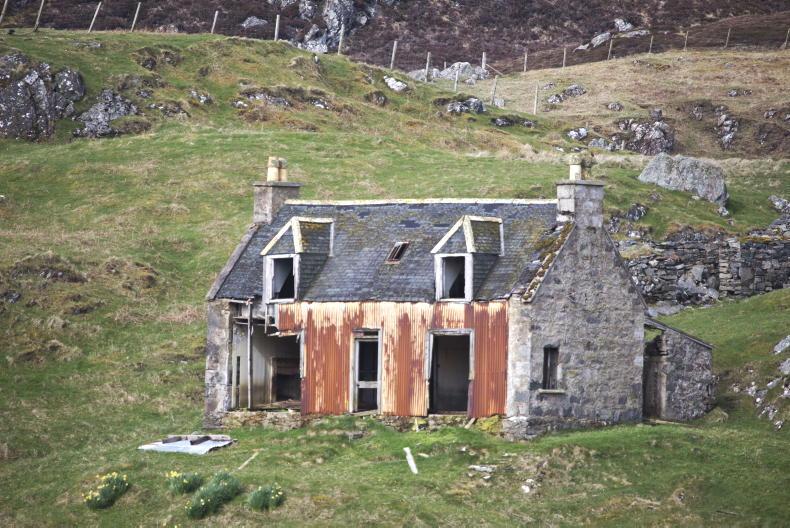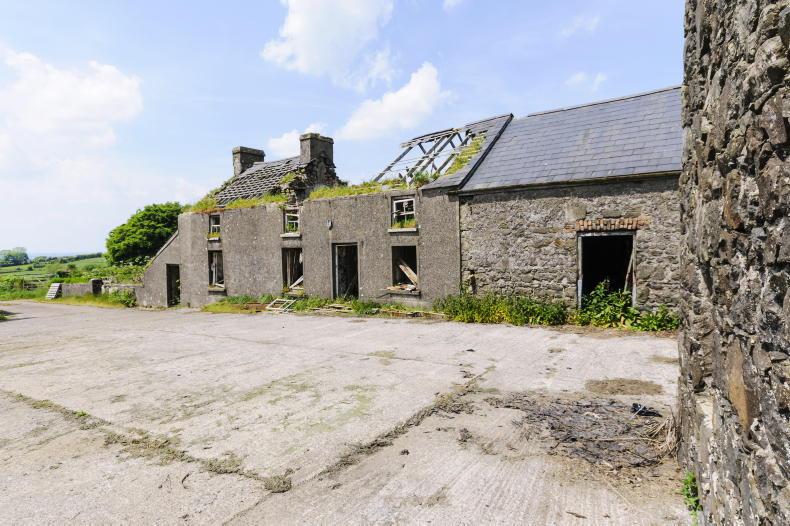The COVID-19 pandemic brought a new sense of vibrancy to the market for rural houses as auctioneers and estate agents reported an increase in demand for houses outside the large urban centres. Working from home became an acceptable option and people who lived in cities out of necessity now had an option to look further afield. It added a new sense of vibrancy to rural communities and it appears that similar is underway since the introduction of the Vacant Property Refurbishment Grant (VPRG). Launched in July 2022, it was initially only available for properties in towns and villages. Calls came for the net to be thrown wider and by November of that year, it was extended nationwide. It has seen increased demand in rural houses, some of which have laid vacant for a short period of time while others may not have been slept in for generations.
The COVID-19 pandemic brought a new sense of vibrancy to the market for rural houses as auctioneers and estate agents reported an increase in demand for houses outside the large urban centres. Working from home became an acceptable option and people who lived in cities out of necessity now had an option to look further afield. It added a new sense of vibrancy to rural communities and it appears that similar is underway since the introduction of the Vacant Property Refurbishment Grant (VPRG).
Launched in July 2022, it was initially only available for properties in towns and villages. Calls came for the net to be thrown wider and by November of that year, it was extended nationwide. It has seen increased demand in rural houses, some of which have laid vacant for a short period of time while others may not have been slept in for generations.
How to qualify:In order for a property to qualify for the VPRG, there are two key elements. The property must be built before 2008 and be vacant for at least two years. Applicants must own the property or be in the process of purchasing it.
Provided the property will be your principal primary residence, the grant aid is up to a maximum of €50,000. This also applies if the house is to be used for long term rental, registered with the Registered Tenancy Board (RTB). If a house is derelict, a further top up of €20,000 is available bringing the total grant up to €70,000.
In July 2023, a top up of 20% was announced for properties on some of the islands. Acknowledging the extra cost involved to carry out building work in these locations, the grants now stand at total of up to €60,000 and €84,000 for vacant and derelict buildings respectively.
Steady interest
Auctioneers have reported steady interest in houses that may potentially qualify for the VPRG. The market hasn’t gone totally crazy however because while the cost of the grant is a factor in some cases, potential buyers are well aware of the hidden costs of bringing these old houses back to life.
There’s no doubting its potential though and this grant has the ability to bring old houses that would have stored turf, acted as calf or sheep housing or just sat empty as the world changed around them, back to life.

Houses eligible for the VPRG on offshore islands can avail of a 20% top up.
What do our readers want to know?I inherited a farm from my uncle. His house is on the land but it hasn’t been lived in for a few years as he moved in with my parents. What do I have to do to prove it’s been vacant? His post was still sent there.
Utility bills are one way of proving that a house hasn’t been lived in for a number of years. Take electricity bills, for example, these would be much lower than when he was living there and could be used to show the local authority that the house was vacant.
I’ve been told that you need a builder to complete the work. I’m pretty handy at building work myself and would be able to do a lot myself. Do you need a builder?
There has been a lot of confusion around this one. You do not need a builder, and yes, you can do the work yourself. However, you can only claim the costs for materials, not your own labour.
Is it absolutely strict on the rule that it cannot be lived in for two years?
Yes, in order for the property to be considered vacant and thereby, allowing you to apply for the VPRG, it must be unlived in for two years.
There is a derelict property on our land and I’d love to do it up and gain additional income through Airbnb. Is this possible?
No, the term rental refers to long term rental. Any property that avails of the grant for rental purposes must register with the RTB.
This is because the scheme is in place to encourage the building of homes and to offer a sustainable approach to the housing crisis. It is not for short term lets or Airbnb.
Can we move in while finishing off the work? We did not move in prior to getting approval.
The rule is that that the property is vacant at time of application. There shouldn’t be an issue with moving in because not everyone can afford to pay rent somewhere else while doing and paying for the work.
However, it is best to check with your local authority.

Old farm houses are eligible for the grant however farm buildings which were never dwellings do not.
Building by numbers: how does it work?By the end of 2025, the intent is that 4,000 homeowners will have availed of the VPRG.
Is this realistic? To date, just 100 grants have been paid out so on paper, it is questionable.
Progress is being made, however, especially when you dig into the figures in light of the timescale.
To date, 6,034 applications have been received and 2,799 of them also applied for the derelict property top-up grant. Of that, 3,166 have been approved and given the go-ahead to get works started.
Applicants have a 13-month window to complete the works. There is some wiggle room due to the fact that building works don’t always run on schedule, subject to approval by the local authority. But a good chunk of that 3,166 should, in theory, be issued the grant by April of next year. This makes that objective of 4,000 grants seem a bit more realistic.
So where will these homes be built?
As our graph below shows, Cork County Council has the largest number of approved applicants at present, sitting at 305 (with a further 111 in Cork city. This is followed by Donegal (277), Mayo (217), Tipperary (210) and Limerick (169).
However, in terms of counties that have actually completed works and been issued grants, Kildare is far and above ahead of the rest. Out of the 108 applications that have been approved, 24 (nearly one quarter) have their works completed. Compare this to Cork with its 305 approved applications where only one grant has been drawn down, based on the most current figures. Irish Country Living reached out to the Department of Housing asking if there was a reason for this but the response was their role is to collate the data.
In terms of the counties with limited applications, Carlow stands at 28 and Longford at 38, but that is reflective of population.
Bigger picture
The figures that have been approved versus the grants been issued must be viewed as part of a bigger picture. The grant was launched in July 2022, and expanded nationwide in November 2022. Based on current data, refurbishment works usually takes about 12 months to complete so the scheme is in the early stages.
Irish Country Living will be following the story and it will be interesting to see how the figures unfold in the coming months.
•Up to €50,000 available to renovate a vacant property
•Up to €20,000 further available for houses that are considered derelict aka structurally unsound
•Properties are considered eligible if they were built before 2008 and have been vacant for more than two years.
•Applicants must own the property or be in the process of purchasing it
Do you have a question about the VPRG?
We will be answering more reader queries in next week’s paper. Send us your queries by scanning this QR code.

Are you starting a project to bring life to an old house?
If you are availing of the VPRG and at application stage, we would love to take the journey with you. Email us at icl@farmersjournal.ie
Read more
Meet the Maker: Ciara Gache and Niamh Mooney
Musical magic at Jim of the Mills





SHARING OPTIONS: